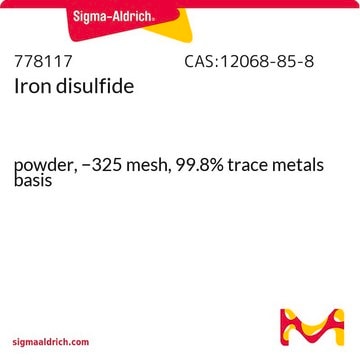All Photos(1)
About This Item
Linear Formula:
ZnO
CAS Number:
Molecular Weight:
81.39
MDL number:
UNSPSC Code:
12352302
PubChem Substance ID:
Recommended Products
grade
SAJ first grade
Assay
≥99.0%
form
solid
reaction suitability
reagent type: catalyst
core: zinc
availability
available only in Japan
storage temp.
15-25°C
SMILES string
O=[Zn]
InChI
1S/O.Zn
InChI key
XLOMVQKBTHCTTD-UHFFFAOYSA-N
Looking for similar products? Visit Product Comparison Guide
Application
Employed in the preparation of NaZnSiO3OH, a novel chiral framework material which has potential application in ion exchange, adsorption or catalysis.
Signal Word
Warning
Hazard Statements
Precautionary Statements
Hazard Classifications
Aquatic Acute 1 - Aquatic Chronic 1
Storage Class Code
13 - Non Combustible Solids
WGK
WGK 2
Flash Point(F)
Not applicable
Flash Point(C)
Not applicable
Certificates of Analysis (COA)
Search for Certificates of Analysis (COA) by entering the products Lot/Batch Number. Lot and Batch Numbers can be found on a product’s label following the words ‘Lot’ or ‘Batch’.
Already Own This Product?
Find documentation for the products that you have recently purchased in the Document Library.
Hyeong Pil Kim et al.
Journal of nanoscience and nanotechnology, 13(7), 5142-5147 (2013-08-02)
Solution processed cathode organic photovoltaic cells (OPVs) utilizing thin layer of ZnO with 27% increase in power conversion efficiency (PCE) to control devices have been demonstrated. Devices without the presence of ZnO layer have much lower PCE than the ones
Long Giang Bach et al.
Journal of nanoscience and nanotechnology, 13(1), 694-697 (2013-05-08)
ZnO nanoparticles were covalently wrapped by polystyrene (PS) through surface thiol-lactam initiated radical polymerization using the grafting from approach. The surface of ZnO nanoparticles was initially modified by 3-mercapto propyltrimethoxysilane to afford thiol functionalized ZnO nanoparticles (ZnO-SH). The controlled radical
Chia-Chi Wang et al.
Journal of nanoscience and nanotechnology, 13(6), 3880-3888 (2013-07-19)
Zinc oxide nanoparticles (nano-ZnO) are one of the most commonly used nanomaterials in industrial products including paints, cosmetics, and medical materials. Since ZnO is a well-known photocatalyst, it is important to further study if nano-ZnO cause phototoxic effect on skin
Jeongmin Kang et al.
Journal of nanoscience and nanotechnology, 13(5), 3526-3528 (2013-07-19)
ZnO-nanowire-based logic circuits were constructed by the vertical integration of multilayered field-effect transistors (FETs) on plastic substrates. ZnO nanowires with an average diameter of -100 nm were synthesized by thermal chemical vapor deposition for use as the channel material in
Fuhai Li et al.
Journal of nanoscience and nanotechnology, 13(7), 5115-5118 (2013-08-02)
The ZnO short nanorods and flowerlike nanostructures doped with Eu3+ ions are prepared by a hydrothermal method through adjusting the hydrothermal temperature. The XRD, FESEM, FT-IR, luminescent and photocatalytic properties are characterized. The results indicate that the hydrothermal temperature affects
Our team of scientists has experience in all areas of research including Life Science, Material Science, Chemical Synthesis, Chromatography, Analytical and many others.
Contact Technical Service





